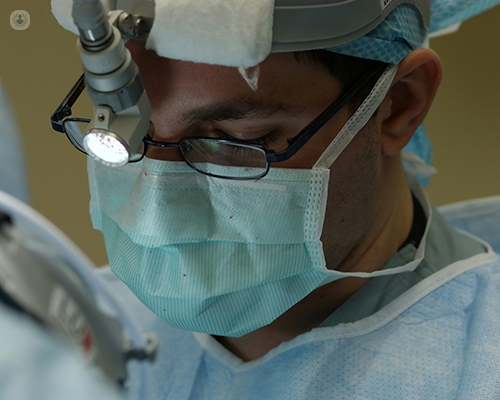The essential guide to reconstructive urological surgery
Autore:
Reconstructive urological surgery is a specialised field within urology focused on restoring the normal function and anatomy of the urinary tract, playing a crucial role in improving quality of life and overall health.
This article explores the various aspects of reconstructive urological surgery, including why it may be needed, the different types of procedures, and the recovery journey.

Why might I need reconstructive urological surgery?
Reconstructive urological surgery becomes necessary when there are structural abnormalities or damage to the urinary tract. This can arise from congenital defects, traumatic injuries, infections, or complications from previous surgeries.
Common reasons for reconstructive urological surgery include:
- urethral strictures
- hypospadias
- urinary fistulas
- urinary incontinence
- surgical reconstruction needs after tumour removal
How is reconstructive urological surgery performed?
Reconstructive urological surgery involves a range of surgical procedures designed to restore normal function and/or structure to the urinary tract or reproductive organs.
Before surgery, a thorough evaluation is conducted, which may include medical history, imaging studies (such as ultrasound, CT scan, or MRI), urodynamic testing (to assess bladder function), and other specialised tests.
The type of anaesthesia used will depend on the complexity and the duration of the surgery, typically being general anaesthesia. Similarly, the surgical approach will differ depending on the specific condition and its location. Techniques such as laparoscopy and robotic-assisted surgery, for example, have revolutionised urological reconstruction, leading to faster recovery times.
Here’s an overview of how some common reconstructive urological procedures are performed:
Urethroplasty
Urethroplasty is performed to repair or reconstruct the urethra, typically due to strictures (narrowing), trauma, or congenital abnormalities.
During urethroplasty, your surgeon accesses the urethra through the perineum or penis. Depending on the severity and the length of the stricture, the surgical approach may involve excising the narrowed segment and rejoining healthy ends (excision and primary anastomosis) or utilising a tissue graft to replace the affected section (substitution urethroplasty).
Bladder reconstruction
Bladder reconstruction is performed to reconstruct the bladder, often after cancer treatment or due to congenital defects.
During bladder reconstruction, your surgeon begins by accessing the bladder through an abdominal or pelvic incision. Augmentation cystoplasty may then be performed, where the bladder is enlarged using bowel segments or synthetic materials to increase bladder capacity and improve function. In addition, reconstruction may also involve removing diseased tissue, repairing defects, or creating a new bladder shape when necessary.
Urinary diversion
Urinary diversion is performed to create a new way for urine to leave the body when the bladder is removed or is non-functional, such as after cystectomy for bladder cancer.
During urinary diversion surgery, your surgeon creates an alternative pathway for urine to exit the body. This may involve redirecting urine from the kidneys directly to a stoma (an opening on the abdomen) through a surgically-created tube (ureterostomy) or utilising a segment of the intestine to create a conduit (ileal conduit) that links the ureters to the stoma.
Penile reconstruction
Penile reconstruction is performed to correct congenital abnormalities or trauma-related deformities of the penis to restore function and appearance.
During penile reconstruction, your surgeon uses techniques such as skin grafts, flaps from nearby tissue with its own blood supply, or implants to reconstruct the penile shaft. For conditions like hypospadias, surgery repositions the urethral opening to the tip of the penis.
What is the recovery process like after reconstructive urological surgery?
After reconstructive urological surgery, you are closely monitored for complications such as bleeding, infection, or adverse reactions to anaesthesia. Your hospital stay will range from a few days to a week, depending on the specific procedure.
Once discharged from the hospital, your recovery continues with scheduled follow-up appointments with your surgeon. These visits are essential for monitoring the healing of surgical wounds, assessing urinary function, and addressing any concerns that may surface during the initial stages of recovery. Stitches or drains used during the surgery are also removed during these follow-up sessions.
As you transition back to your daily life, the pace and extent of resuming activities will be guided by your surgeon's recommendations. The time frame for resuming these activities will vary greatly depending on the complexity of the surgery and your overall health.
In addition to physical adjustments, some reconstructive urological surgeries necessitate temporary modifications to daily habits and routines. These adjustments may involve changes in diet or specific lifestyle modifications aimed at supporting recovery and optimising long-term outcomes.


